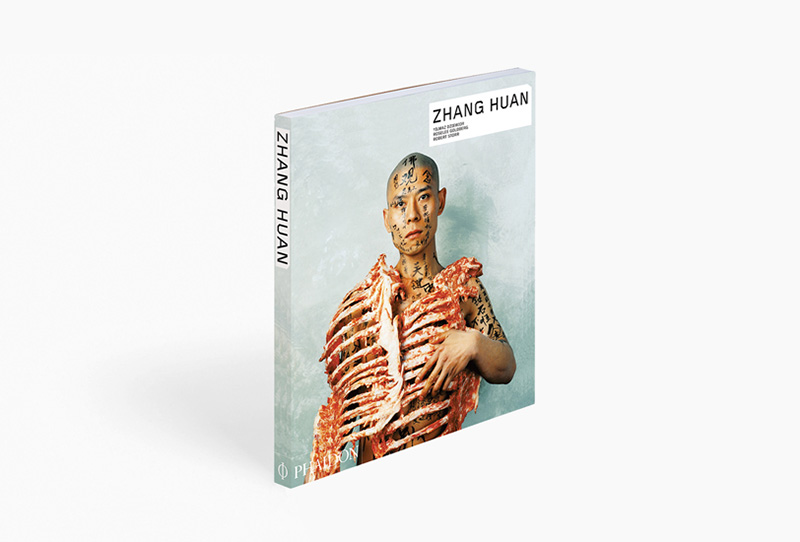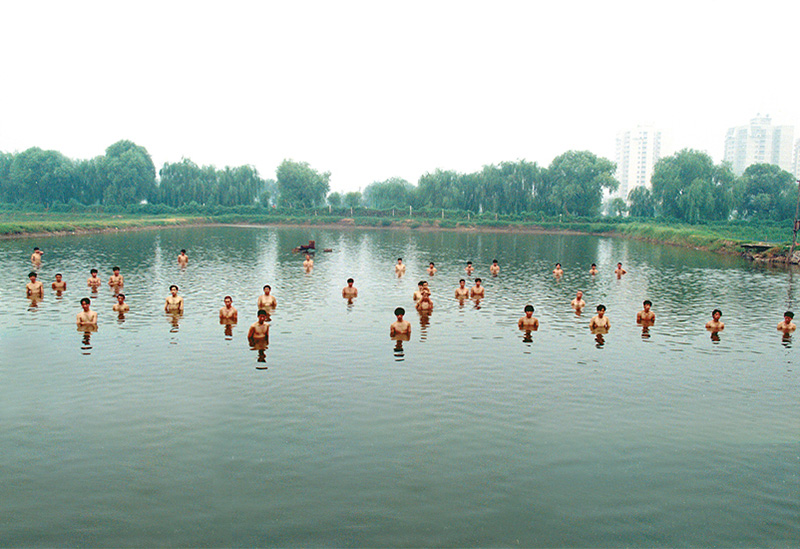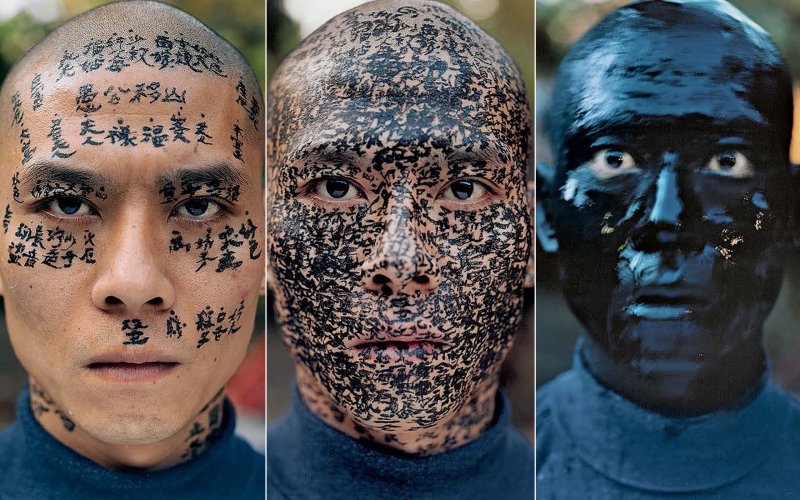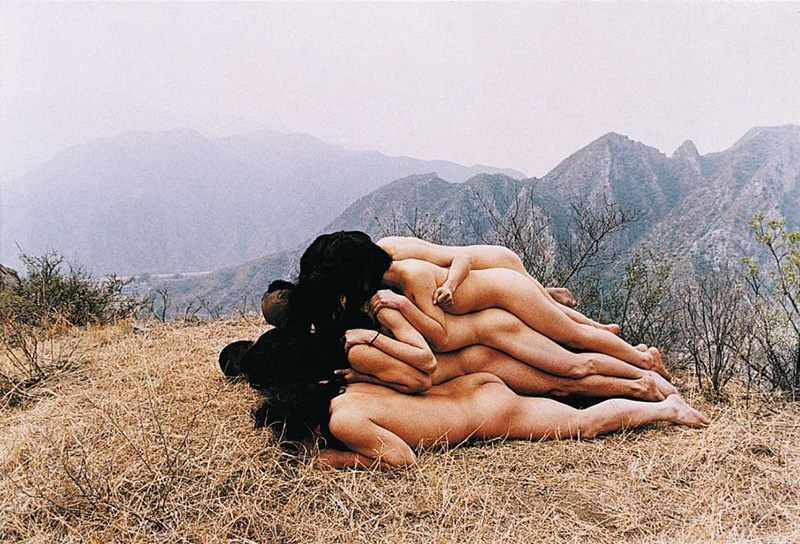BOOK:Zhang Huan, Phaidon Publications
 Zhang Huan has emerged as a key figure in the flourishing Chinese art scene, an explorer of the limits of the human body and. His work engages with Buddhist philosophy and rituals and with the artist’s notion that the contemporary condition is continually revitalized through an engagement with the past. In the monograph “Zhang Huan” by Phaidon Publications, RoseLee Goldberg discusses with Zhang his life and motivations, his childhood and his realization that his body could be the best vehicle to express himself. Yilmaz Dziewior’s Survey analyses the evolution of Zhang’s work from his early, controversial performances in Beijing through to his interest in Buddhism and his recent development of monumental sculptures and paintings. Along with other student artists Zhang Huan formed the collective Beijing East Village in a slum of Beijing. This period was a dramatic time in Chinese history, culminating in 1989 in a series of protests and demonstrations in Beijing’s Tiananmen Square. Like many Chinese art students of the time, Zhang was attracted to the Avant-Garde, but he had limited resources. Perhaps not surprisingly then, his expression took the form of provocative performance art. For most of his performances, Zhang was nude, and he was often undergoing some painful experience, as in the piece “12 Square Metres” (1994) for which he covered himself in fish oil and honey and sat motionless for several hours in a public latrine while insects crawled over him. Other characteristic images of art made during this period included Zhang’s face and body covered with calligraphy, sometimes to the point of obliterating all skin surface. He was included in the influential New York exhibition “Inside Out” in 1998, and he lived and worked in New York City from 1998 to 2006. In 2006 he established a studio in Shanghai, where he began to seek a greater connection to Chinese heritage and history. This marked a new direction in his work, as he turned from performance to sculpture, painting, and installation. Through creating large-scale sculpture, often using found objects such as doors from rural Chinese homes, he continues to explore new ways to render his interest in the human body and its unique language.–Dimitris Lempesis
Zhang Huan has emerged as a key figure in the flourishing Chinese art scene, an explorer of the limits of the human body and. His work engages with Buddhist philosophy and rituals and with the artist’s notion that the contemporary condition is continually revitalized through an engagement with the past. In the monograph “Zhang Huan” by Phaidon Publications, RoseLee Goldberg discusses with Zhang his life and motivations, his childhood and his realization that his body could be the best vehicle to express himself. Yilmaz Dziewior’s Survey analyses the evolution of Zhang’s work from his early, controversial performances in Beijing through to his interest in Buddhism and his recent development of monumental sculptures and paintings. Along with other student artists Zhang Huan formed the collective Beijing East Village in a slum of Beijing. This period was a dramatic time in Chinese history, culminating in 1989 in a series of protests and demonstrations in Beijing’s Tiananmen Square. Like many Chinese art students of the time, Zhang was attracted to the Avant-Garde, but he had limited resources. Perhaps not surprisingly then, his expression took the form of provocative performance art. For most of his performances, Zhang was nude, and he was often undergoing some painful experience, as in the piece “12 Square Metres” (1994) for which he covered himself in fish oil and honey and sat motionless for several hours in a public latrine while insects crawled over him. Other characteristic images of art made during this period included Zhang’s face and body covered with calligraphy, sometimes to the point of obliterating all skin surface. He was included in the influential New York exhibition “Inside Out” in 1998, and he lived and worked in New York City from 1998 to 2006. In 2006 he established a studio in Shanghai, where he began to seek a greater connection to Chinese heritage and history. This marked a new direction in his work, as he turned from performance to sculpture, painting, and installation. Through creating large-scale sculpture, often using found objects such as doors from rural Chinese homes, he continues to explore new ways to render his interest in the human body and its unique language.–Dimitris Lempesis



